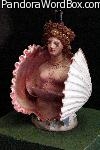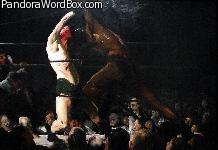Our websites offer information mostly for educational purposes with no intent to alter health care protocols nor to serve as a sole source of medical information.
Always seek the advice of your local health care provider.
|
×  Get the Point! PAIN – WOMAN – UKRAINE – PUTIN MOTHER – SISTER – SPOUSE – MOTHER RUSSIAN WAR – HOLOCAUST – GENOCIDE |
NUDE NAKED
Knot Knout Know
Knit Knock Knack
Gnosis Prognosis
As elegantly expressed by Kenneth Clark, the English language, with its elaborate generosity, distinguishes the naked from the nude. To be naked is to be deprived from our vestments; it implies some embarrassment. Nude, in educated usage, carries no nuance of discomfort.
The notions of Clark, outlined above, are centered, in my view, on "to know" which in turn represents "realize". In such a context, these notions` link with medicine is wide and deep. Clever clinicians examine patients who are free of knots, holding their attire to shield their "pudor". Proper clinical examinations call for patients to be "free of knots" or "de-nuded", thus nude. Patients are not naked; they are not "a-shamed". Nakedness, not nudity, is linked with sin and mecantilism. Regarding sin, Pope Pius IV ordered "fig" leaves to be placed on the "private" parts of an otherwise glorious mural in the Sistine Chapel. Perhaps, this Pope, confronted with "going to Hell", perceived the nude human figures as implicitly erotic. Merchants, on the other hand, know that "sex sells". It is self evident that much of modern "propaganda", promoting beauty-free products, invokes pugnacious reactions via the use of female "nakedness". The appeal of plain nudity is much less that even partial nakedness - ponder why!
It is worth pondering over whether the many ancient murals and sculptures depict deities and heroes as naked or nude.
20220323 ww













